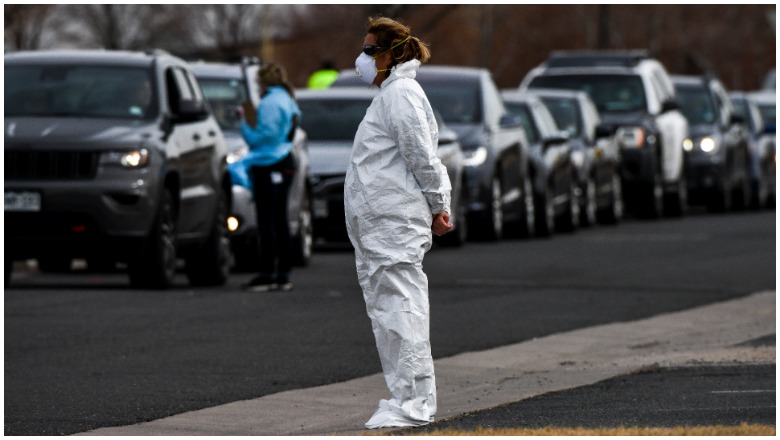
Getty
What is coronavirus’ temperature resistance? What type of weather and humidity can it survive? How hot can the temperature be, and how cold can it be, before the coronavirus is killed?
Many people have claimed the the rising temperatures of summer will virtually squash the coronavirus outbreak, or that the cold temperatures in the fall will ensure the virus won’t continue into winter.
Experts say that it is true, to a degree, that temperature can affect the spread of the coronavirus — but not as much as precautionary measures like social distancing and good hygiene can.
Here’s what you need to know:
Experts Say Humidity & Warmer Temperatures Could Play a Role in the Spread of the Coronavirus
To The Boston Herald, Dr Stefan Baral, an epidemiology expert at Johns Hopkins University, said that he expects “a decrease” in the virus as the U.S. approaches warmer weather months.
Baral said, “As we move into warmer weather and people are more out in the open, I expect there to be a natural decrease, similar and consistent with the decrease with other upper respiratory tract infections.”
With that said, you also have to take humidity into account. Thomas Jaenisch, a professor at the University of Colorado School of Public Health, told The Herald,
“It’s based on pure physics. How long can those droplets be in the air and not fall down? This depends on how big the droplets are, the ambient temperature, the moisture. The idea is when it is dry and hot, then these droplets fall down faster. When it is moist and colder, then the droplets can stay in the air suspended and can be taken in by another human. But, we don’t know really know enough about the features of the virus to really be sure.”
Similarly, a professor for Accuweather said, “Sunlight will cut the virus’s ability to grow in half, so the half-life will be 2.5 minutes, and in the dark it’s about 13 to 20 [minutes]. Sunlight is really good at killing viruses.” So longer days might also have an impact on the spread of COVID-9.
A recent study showed that the coronavirus has been spreading across the globe most readily along areas where the average temperatures are between 41-52 degrees Fahrenheit, and the humidity levels, on average, are between 50-80%. The researchers in the study did point out that this information was still quite preliminary.
“Although the current correlations with latitude and temperature seem strong, a direct causation has not been proven and predictions in the near-term are speculative and have to be considered with extreme caution,” the study concluded.
The Washington Post notes that there are many other variables that could also account for the spread of the coronavirus in the last few months, including: human behavior, population density, policy interventions or lack thereof, and more.
In an emailed statement to The Post, Jeffrey Shaman, the director of the climate and health program at Columbia University’s Mailman School of Public Health, said that the coronavirus may have a seasonal cycle, but the information just isn’t there yet to confirm this.
“Given that it is a newly emerged virus to which most of the world is susceptible, I don’t think it will abate in April. Rather, it might ramp down in the U.S. in late May or June,” he said. “A similar pattern has been observed with pandemic influenza. Due to high susceptibility, the pandemic virus continues to circulate through late May or June, is limited in summer, and ramps up again in September.”